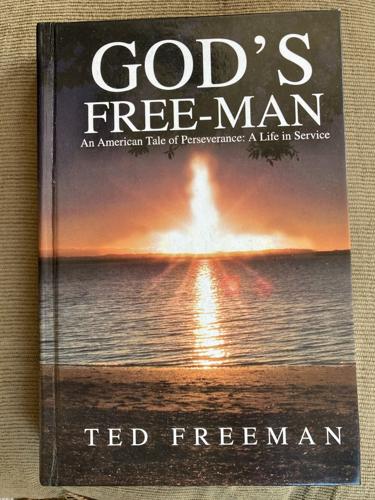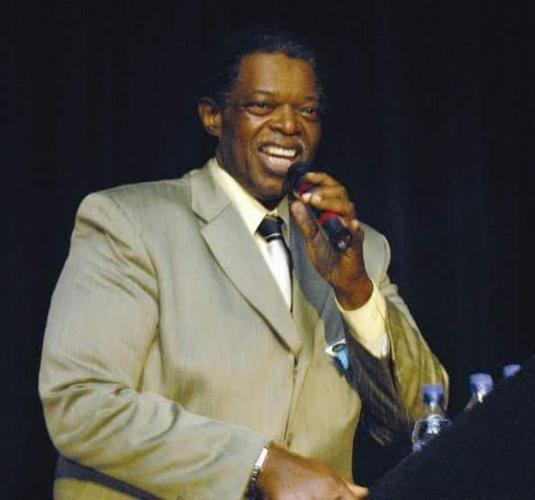Our history is a work in progress. Historians are forever trying to get at the full, most representative story, which is often followed by the next, more definitive version. Those things that inform history — the documents and news accounts, the memory, the teller’s assembling and weaving of found fragments — can appear complete but can also leave us wanting more.
Cayuga County’s official history credits its beginnings to an early settlement founded by John L. Hardenbergh in 1793. Some versions note that Hardenbergh was accompanied by slaves, among them, Harry and Cate Freeman.
Harry and Cate Freeman were officially freed in the early 1800s, according to Aurelius town minutes. The process involved an overseer of the poor declaring that each was less than 50 years old and fit enough to take care of themselves. Cate is described as “a female Negro slave.” Her husband, Harry, is identified as “formerly the property of John L. Hardenbergh." A few months after Harry was freed, Hardenbergh died, in April 1806.
People are also reading…
That Hardenbergh and other early settlers in Auburn owned slaves is rarely elaborated upon, yet historians, when they mention Freemans, refer to them as Hardenbergh’s slaves. Other records support that. An 1804 entry in town records, signed by Hardenbergh, identifies one of Cate’s sons, Hannibal, as “my lawful Negro slave.” Children of slaves were considered slaves across America for hundreds of years.
Now, a new book by an Auburn descendant of the Freemans turns that slave identity on its head.
In “God’s Free-Man, An American Tale of Perseverance: A Life in Service,” Ted Freeman makes the case that his ancestors were never slaves in America but indentured servants, who traveled from Britain to work for Hardenbergh long enough to pay their travel costs. In this account, Cate and Harry were beloved by Hardenbergh, served as his confidants and advisers, and on their own started businesses and invested in real estate. For people of few means and fewer privileges, they had an uncommonly critical role in helping to establish the community we now known as Auburn.
When Col. John Hardenbergh arrived in the forest north of Owasco Lake in the summer of 1793 to build his new home, he was not alone. He was ac…
The Hardenbergh that Freeman portrays conspires with Harry and Cate to refer to them as his slaves, a ruse that protects them from slave hunters and mistreatment from other whites. Once freed, the connections they’d made through Hardenbergh gave them unique status among African-Americans and white abolitionists who came through or settled in Auburn.
The Hardenbergh/Freeman relationship begins in Ulster County soon after the Freemans arrive in America. When Hardenbergh decides to venture deeper into the wilderness toward what is now Auburn, Harry and Cate accompany him. While Hardenbergh oversees construction of a mill and other businesses on the Owasco River, Harry and Cate establish a community of freed and runaway slaves, securing work for them at mills, quarries and construction projects, at homes as gardeners and servants. Their community was called New Guinea, after the part of Africa, Guinea, where Harry and Cate had been kidnapped. They had been bound for a life of slavery in America when their ship encountered high seas and took shelter in a British harbor. Because slavery had been declared illegal in Britain in 1772, they became free when they landed there.
Auburn maps from the early 1800s identify the community, New Guinea, along the Owasco River, as “Negro Settlement.”
“God’s Free-Man” places Harry and Cate Freeman and their extended family prominently at the center of Auburn’s bustling development, as well as at the center of Auburn’s role in the Underground Railroad. Abolitionists Frederick Douglas, Sojourner Truth, David Ruggles and Harriet Tubman all pass through New Guinea at some point, engaging with the Freemans.
When Hardenburgh enlists to fight in the Revolutionary War, Harry joins him, not by enlisting, but by accompanying Hardenbergh as his servant, an arrangement the two men agree upon that enables Harry to be accepted, or at least ignored, in an army that was fearful of allowing Blacks to take up arms.
It is all plausible, if not entirely verifiable through the research conventions biographies are usually built around. The book has few dates or cited sources, no index or bibliography. But in a way that no other books have, “God’s Free-Man” emphasizes the central role Blacks had in Auburn’s development from the very beginning, and the freedom they had in Auburn to make their own lives.
The impetus for writing “God’s Free-man” began in 1968 when Ted Freeman was a student at Auburn’s Mount Carmel High School, and a classmate asked if he was related to Hannibal “Willie” Freeman, an accused murderer who was famously, though unsuccessfully, defended by William H. Seward in 1846 with an insanity defense. Until prodded by his friend, Ted Freeman had never heard about Willie, Harry or Cate.
“It’s really funny how historians have just bypassed our history,” he said. “My Dad was a medic in the Pacific. All his cousins fought in the war, one came home shellshocked from D-Day. But every time I turned on a TV program or a movie, or opened a book, there isn’t anybody that looked like me.”
After Mount Carmel, Freeman attended Villanova University, then made a professional career advocating for Blacks, first with street gangs in Philadelphia, then as a director of the Booker T. Washington Community Center in Auburn, then with Urban League offices in Rochester and in Hudson County, New Jersey. All the while he kept researching and exploring questions about those early Freemans. Ted Freeman now lives in Orlando with his wife, Rhonda, and works as a minister.
Harry and Cate Freeman were deeply religious, Ted Freeman said, their faith sustaining them through the oppressiveness of life for African-Americans in early America. They organized sentry networks of Black men and women who would alert New Guinea residents to the proximity of slave catchers, whom the sentry networks would surround and intimidate to send them on their way. In New Guinea, freed and escaped slaves could find housing, employment, as well as safety and comfort living among their own people, and that, Freeman says, is what first attracted Tubman to Auburn.
Throughout the book, Freeman makes clear that his ancestors and African-Americans who followed had to project a non-threatening demeanor around Auburn’s white residents and keep those white residents out of their business.
Several of Harry and Cate Freeman’s grandsons fought in the Civil War, serving under the Bureau of Colored Troops. One of them, William “Roundtree” Freeman, later became Seward’s coachman and accompanied the secretary of state on his world travels. After Seward died, William “Roundtree” Freeman became a property manager for Tubman.
The book concludes with William “Roundtree” Freeman’s final years as the family patriarch in the early 1900s, his death in 1931, and the dissolution of the family estate — properties along Warden Lane, Chapman Avenue, and Forte and Foote streets — that Freemans had acquired over decades. Greed and mismanagement among family members led to the loss of the properties.
Ted Freeman, guided as the best of his ancestors were by God’s precepts to love and to accept what comes even when it’s hard, sees the book as both an important part of Auburn’s history and a healing document for the descendants of Harry and Cate Freeman.
“Ain’t nobody going to refute what I had to say,” Freeman said. “That's all God-given.”
Auburn native Ted Freeman wanted to be an international corporate lawyer by age 25.



















